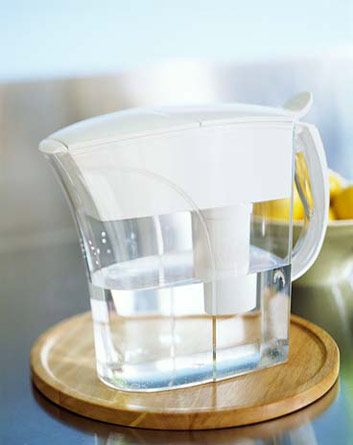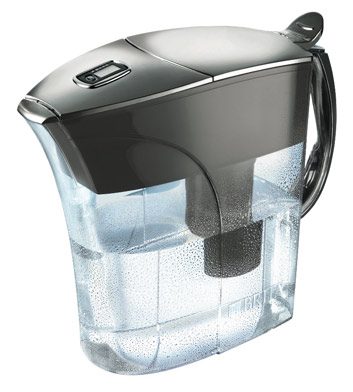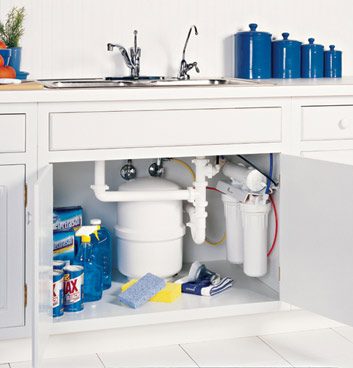
Why drink filtered water?
Bottled water is now an environmental no-no. Luckily, Canadians have long been fortunate in that our tap water is regulated and that water providers must meet guidelines for allowable concentrations of contaminants. In fact, as far as water-treatment researcher Pierre Bérubé of the University of British Columbia is concerned, water that meets those guidelines should make buying a home filtration system unnecessary. But for those who still worry, or who believe that a filter improves tap water’s taste, here’s a roundup of some of the available options.

Pour-through carafe
Examples: Thermos Krystal Pure 2.4 L, $20; GE Pitcher Drinking Water Filtration System, $10; Brita’s Chrome Pitcher (pictured), $40
What it does: When you pour tap water into the reservoir, gravity pulls it through a carbon filter that reduces chlorine, lead and, depending on the model, disinfectant by-products (total trihalomethanes or TTHMs) and microscopic parasites (such as giardia and cryptosporidium) from infected humans, deer and beavers.
Who it’s best for: Carafes typically hold approximately two litres of water, so they’re best suited to smaller households.
Ease of installation: Simply fill with tap water, then refrigerate if desired.
Good to know: While the initial cost of the carafe may be low, you’ll need to buy about six filters per year, which can add up.
.jpg?fit=353%2C353)
Faucet attachment
Examples: Brita White Faucet Filtration System, $34; Pur Ultimate Faucet Mount Filter, $36 (pictured)
What it does: Tap water flows through a carbon filter inside an attachment that is screwed onto the faucet. These filters typically reduce more chemicals, contaminants and pharmaceutical compounds (such as hormone medications) than carafes. And faucet filters last longer: about three months.
Who it’s best for: Larger households or those who want the convenience of having filtered water on tap.
Ease of installation: For standard faucets, attaching the filter to the faucet typically requires no tools and takes just a few minutes.
Good to know: Washing dishes will use up filters quickly; consider a model that lets you switch from filtered to unfiltered water.

Under the Sink
Examples: Rainfresh Drinking Water System 2, $150; GE SmartWater Reverse Osmosis 10 Gallon System, $426 (pictured)
What it does: These filter systems are connected to the cold-water line. With some of the models, tap water passes through carbon and ceramic filters that remove impurities. With reverse osmosis systems, water pressure is reversed as it flows through carbon filters and a semi-permeable membrane.
Who it’s for: The cost-conscious: Filters last up to six months, so they may be cheaper in the long run than other systems.
Ease of installation: If you’re moderately handy, you can install these units in about an hour; you’ll have to tap into the water line and drill a hole into the sink and/or counter. If you’re not comfortable with DIY installations, you will need to hire a plumber or handyperson.
Good to know: Under-the-sink filters take up cabinet space, and reverse osmosis systems filter water more slowly than other types.
Related:
• Water is the real magic ingredient
• How to recycle your Brita filters
• 9 gadgets for a healthier kitchen
